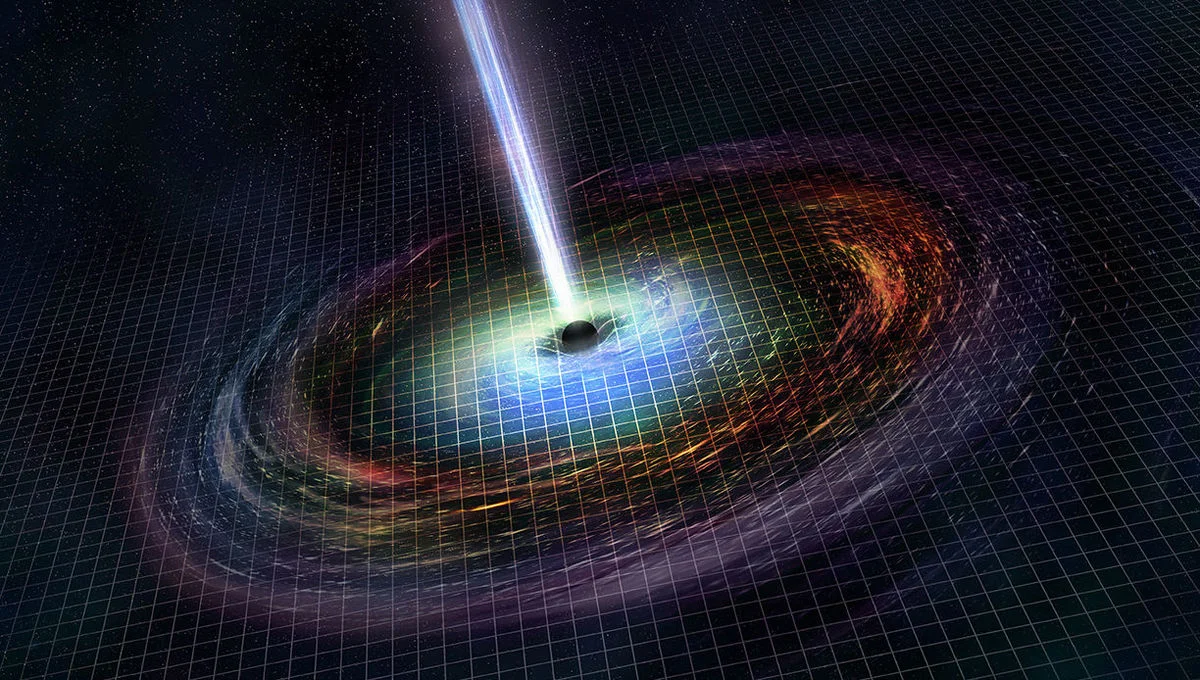Mysterious Black Holes
Artwork showing a newly-formed black hole with material swirling around it, and jets of energy and matter blasting away from its poles. Credit: NASA/CXC/M.Weiss
Artwork depicting two black holes orbiting each other. Note the spins don't align. Credit: LIGO/Caltech/MIT/Sonoma State (Aurore Simonnet)
the masses of the two black holes in this event are by far the highest ever seen by LIGO. They were 50.6 and 34.3 times the Sun’s mass each (with some uncertainty), making them very big stellar-mass black holes. Also, from the strength of the signal the distance to them is inferred to be a whopping 9 billion light years — two-thirds of the way across the visible Universe! That’s very exciting, because it means we can actually detect such events at cosmological distances, so far from us that the Universe has changed measurably over the time it took the signal to reach us.
This next part is what makes the hair on the back of neck stand up. When two black holes merge, a fraction of their mass is converted into energy in the form of gravitational waves. That fraction is only a few percent, but we’re talking about huge masses here. Then when you calculate the energy radiated away by using E=mc2, the numbers are teeth-chilling.
The eleven known mergers that have produced gravitational waves, including ten from black holes and one from neutron stars. Each one is shown as the two component masses merging (upward curved arrow) to form a new, more massive object. The objects labeled EM are comparison examples detected using light (electromagnetic waves), not gravitational waves. Credit: LIGO-Virgo / Frank Elavsky / Northwestern U....
In the case of GW170729, the final mass of the black hole after the merger was 80.3 times that of the Sun. The math isn’t straightforward, but this means that about 4.8 times the mass of the Sun was converted directly into energy in the merger event. When you do the calculation, that means the total energy radiated was about 9 x 1047 Joules.
Yegads. That number is terrifyingly huge. Over its entire 10 or so billion year lifetime, the Sun will emit something like 1 x 1044 Joules of energy. That black hole merger emitted nearly ten thousand times that much energy in a fraction of a second.
